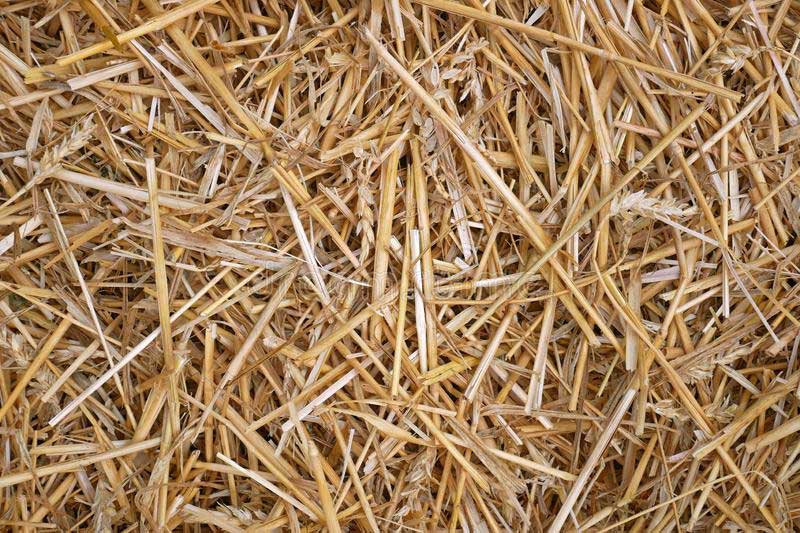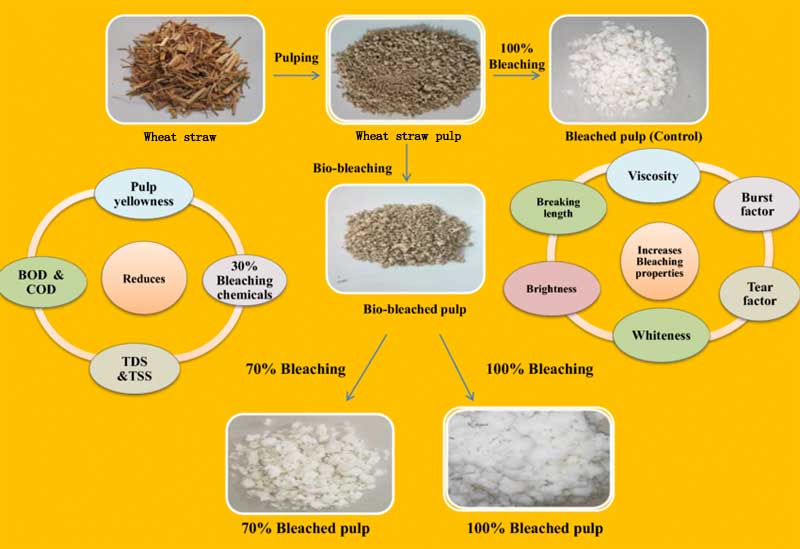Wheat straw pulp making
Wheat straw pulp making is the process of converting wheat straw into pulp, which can be used to make a variety of paper products. Wheat straw is the leftover stalks and leaves after wheat grains have been harvested. These leftover materials are usually considered waste and are either burned or left in the field, contributing to pollution and environmental degradation. However, with the rise of sustainable practices in various industries, wheat straw pulp making has become an attractive alternative to traditional pulp making methods.
Definition of Wheat Straw Pulp
Wheat straw pulp is a type of paper pulp made from the fibrous materials of wheat straw. The process involves separating the cellulose fibers from the lignin and other materials in the straw, resulting in a pulp that can be used to make paper products.
Importance of Wheat Straw Pulp Making
The importance of wheat straw pulp making lies in its potential to reduce waste and environmental degradation. By utilizing the leftover materials from wheat farming, wheat straw pulp making can decrease the amount of waste that would otherwise be burned or left in the field. Additionally, wheat straw pulp is a sustainable alternative to traditional pulp, which often involves the harvesting of trees, leading to deforestation and other environmental issues.

Advantages of Wheat Straw Pulp over Traditional Pulp
Wheat straw pulp has several advantages over traditional pulp. Firstly, wheat straw pulp is a sustainable alternative to traditional pulp. As mentioned earlier, traditional pulp often involves the harvesting of trees, leading to deforestation and other environmental issues. Secondly, wheat straw pulp has a lower carbon footprint than traditional pulp making methods, as it does not require the same level of energy and resources to produce. Thirdly, wheat straw pulp can be produced locally, reducing the need for long-distance transportation, which further reduces its environmental impact.
Overview of the Process of Making Wheat Straw Pulp
The process of making wheat straw pulp involves several steps. Firstly, the wheat straw must be harvested and stored properly to maintain its quality. Next, the straw is pre-treated to remove any impurities and make it more receptive to the pulping process. There are two main pulping processes used in wheat straw pulp making: chemical pulping and mechanical pulping. Chemical pulping involves the use of chemicals to separate the cellulose fibers from the lignin and other materials in the straw. Mechanical pulping involves the use of mechanical force to separate the fibers. The pulp is then bleached to remove any remaining impurities. Finally, the pulp is used to make paper products, such as tissue paper, printing paper, and cardboard.
In summary, wheat straw pulp making is an important and sustainable alternative to traditional pulp making methods. The process involves converting wheat straw into pulp, which can be used to make a variety of paper products. Wheat straw pulp has several advantages over traditional pulp, including its sustainability and lower environmental impact. In the following sections, we will explore the process of making wheat straw pulp in more detail, including the raw materials used, the pulping processes, and the paper products that can be made from wheat straw pulp.
Raw Materials
Wheat straw is the primary raw material used in wheat straw pulp making. There are several types of wheat straw that can be used, including winter wheat straw and spring wheat straw. Winter wheat straw is typically harvested in the late spring or early summer, while spring wheat straw is harvested in the fall. The type of wheat straw used can affect the quality of the resulting pulp.
Harvesting and Storage of Wheat Straw
Harvesting and storage of wheat straw are crucial steps in the wheat straw pulp making process. The wheat straw must be harvested at the proper time to ensure its quality. If the wheat straw is harvested too early, it may not be mature enough to produce good quality pulp. If it is harvested too late, it may have started to decompose, which can affect the quality of the pulp.
After the wheat straw is harvested, it must be stored properly to maintain its quality. This involves storing the wheat straw in a dry and cool place, away from direct sunlight. If the wheat straw is stored improperly, it may become contaminated or start to decompose, which can affect the quality of the pulp.
Pre-Treatment of Wheat Straw
Pre-treatment of wheat straw is the process of preparing the straw for the pulping process. The pre-treatment process typically involves removing any impurities from the straw, such as dirt, rocks, and other debris. This can be done using a combination of manual and mechanical methods.
In addition to removing impurities, the pre-treatment process also involves making the straw more receptive to the pulping process. This can be done through a variety of methods, including soaking the straw in water or other chemicals, or using heat to soften the straw.
Overall, the quality of the raw materials used in wheat straw pulp making is crucial to the quality of the final product. Harvesting and storage must be done properly to maintain the quality of the wheat straw, and pre-treatment is necessary to prepare the straw for the pulping process.

Bleaching in Wheat Straw Pulp Making
Bleaching is an essential process in wheat straw pulp making that involves the removal of lignin and other impurities from the pulp. This process is crucial because it determines the brightness, strength, and quality of the final paper product.
Importance of Bleaching in Pulp Making
Bleaching is important because it improves the aesthetic properties of the pulp, making it suitable for producing high-quality paper products. Bleaching also removes impurities from the pulp, which can cause discoloration, and improve the pulp's strength, flexibility, and durability.
Types of Bleaching Chemicals
There are several types of bleaching chemicals used in wheat straw pulp making, including:
Chlorine-based bleaching agents: These agents are effective at removing lignin and other impurities from the pulp but can be harmful to the environment and human health.
Elemental chlorine-free (ECF) bleaching agents: ECF bleaching agents are less harmful to the environment and human health than chlorine-based agents but still produce some harmful by-products.
Totally chlorine-free (TCF) bleaching agents: TCF bleaching agents are the most environmentally friendly option because they do not produce any harmful by-products.
Environmental Impact of Bleaching
Bleaching can have a significant impact on the environment because of the chemicals used in the process. Chlorine-based bleaching can produce harmful by-products, such as dioxins and furans, which can cause environmental and health problems. ECF and TCF bleaching are more environmentally friendly options but can still have an impact on the environment if not managed correctly.
Wheat straw pulp making is an essential process for producing high-quality paper products. The process involves several stages, including raw material selection, pulping, and bleaching. Chemical and mechanical pulping are the two main methods used in wheat straw pulp making, each with its advantages and disadvantages. Bleaching is a critical process that improves the quality of the pulp, but it can also have significant environmental impacts if not managed correctly. By using sustainable practices and environmentally friendly bleaching agents, the environmental impact of wheat straw pulp making can be minimized.

Sustainability of Wheat Straw Pulp Making
Wheat straw pulp making is considered to be a sustainable alternative to traditional pulp making methods that use wood fibers as raw material. Here are some of the key sustainability factors associated with wheat straw pulp making:
-
Use of Agricultural Waste as Raw Material
- Wheat straw is an agricultural waste product that is generated in large quantities during the harvesting of wheat. By using wheat straw as a raw material for pulp making, the industry can reduce the amount of waste that is generated and also create value from a resource that would otherwise be discarded. This helps to promote a circular economy and reduce the environmental impact of wheat straw disposal.
-
Reduction in Environmental Impact of Wheat Straw Disposal
- If wheat straw is not properly disposed of, it can contribute to soil erosion and air pollution. By using wheat straw as a raw material for pulp making, the industry can help to reduce the environmental impact of wheat straw disposal and promote sustainable waste management practices.
-
Conservation of Forest Resources
- Using wheat straw as a raw material for pulp making can help to reduce the demand for wood fibers and conserve forest resources. This is particularly important in regions where deforestation is a significant environmental issue.
In addition to these sustainability factors, wheat straw pulp making also offers several environmental benefits compared to traditional pulp making methods.
Environmental Benefits of Wheat Straw Pulp Making
Wheat straw pulp making offers several environmental benefits compared to traditional pulp making methods. Some of the key benefits are:
Reduced Water Consumption
Wheat straw pulp making requires less water compared to traditional pulp making methods. This is because wheat straw has a lower lignin content, which means that it requires less water to break down the fibers during the pulping process. This can help to conserve water resources and reduce the environmental impact of pulp making.
Lower Energy Consumption
Wheat straw pulp making also requires less energy compared to traditional pulp making methods. This is because wheat straw has a lower density than wood fibers, which means that less energy is required to break down the fibers during the pulping process. In addition, wheat straw has a lower lignin content, which means that less energy is required to bleach the pulp. This can help to reduce greenhouse gas emissions and promote sustainable energy use.
Reduced Greenhouse Gas Emissions and Air Pollution
Wheat straw pulp making can also help to reduce greenhouse gas emissions and air pollution. This is because wheat straw is an agricultural waste product that would otherwise decompose and release methane, a potent greenhouse gas, into the atmosphere. By using wheat straw as a raw material for pulp making, the industry can help to reduce greenhouse gas emissions and promote sustainable waste management practices.

